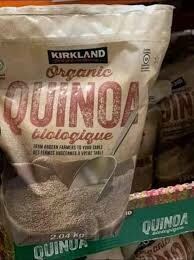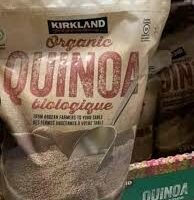
San Román, Puno, Perú
How is it produced?
Quinoa originates from South America, where it has been traditionally grown as a staple crop due to its high nutritional value for local consumption. While consumption of quinoa has spread throughout the developed world, most of its cultivation remains in the Andean region of northwestern South America: today, 80% of global quinoa production comes from Peru, Bolivia and Ecuador, which feature the highest levels of quinoa biodiversity and genetically-improved varieties. It was originally produced by small-scale farmers, but increasingly the production has shifted to industrial farming (Alandia et al., 2020).
Describe the supply chain to the store shelf in Canada:
Being proclaimed as a “superfood” and its demand rising in the developed countries, most of the production of quinoa today in the Andean region of South America is directed towards exports. As the production shifted towards industrial farming, more resources were allocated to the production of quinoa in the agricultural regions of Peru, Bolivia and Ecuador. Quinoa is then transferred by distributors, who export it into the developed countries through channels provided by the Neoliberal trade agreements, which facilitate this trade and enable quinoa to reach the shelves of Canadian supermarkets with ease (McDonnell, 2015; FAO, 2015; Stensrud, 2019).
What is the power balance between the producer and seller?
The power balance between the producer and the seller is a reflection of the imbalance between the developed and developing world, as a result of which an international system was set up to benefit the sellers more than the local farmers. Neoliberalism affects the global quinoa trade by diminishing the relative profit accrued by quinoa farmers when they sell to developed world markets. Mercado & Ubilius (2017) have shown that the quinoa value chain has become increasingly centralized, with Andean farmers now working to support the needs of distributors.
Can you recommend changes to the system to improve the balance?
Quinoa producing countries must restore control over quinoa trade to ensure more widespread economic, cultural, and dietary justice to the region (Rodrik, 2011). To overcome its peripheral position in global markets, a coordinated strategy must be pursued by farmers and domestic governments to safeguard biodiversity and invest in technology. Also, steering local food consumption to the more nutritiously dense grain will help hedge against inferior food substitutes and empower local communities (Philpott, 2013).
References/Resources:
References
Alandia, G., Rodriguez, J., Jacobsen, S.-E., Bazile, D., & Condori, B. (2020). Global expansion of quinoa and challenges for the Andean region. Global Food Security, 26, 100429.
FAO. (2015). State of the art report on quinoa around the world in 2013. FAO. https://www.fao.org/3/i4042e/i4042e.pdf
McDonell, E. (2015). Miracle foods: Quinoa, curative metaphors, and the depoliticization of global hunger politics. Gastronomica, 15(4), 70-85.
Mercado, W., & Ubillus, K. (2017). Characterization of producers and quinoa supply chains in the Peruvian regions of Puno and Junin. Scientia Agropecuaria, 8(3), 251-265.
Philpott, T. (2013). Quinoa: good, evil, or just really complicated? The Guardian https://www.theguardian.com/environment/2013/jan/25/quinoa-good-evil-complicated
Rodrik, D. (2011). The globalization paradox: Democracy and the future of the world economy: WW Norton & Company.
Stensrud, A. B. (2019). Safe milk and risky quinoa: The lottery and precarity of farming in Peru. Focaal, 2019(83), 72-84.

